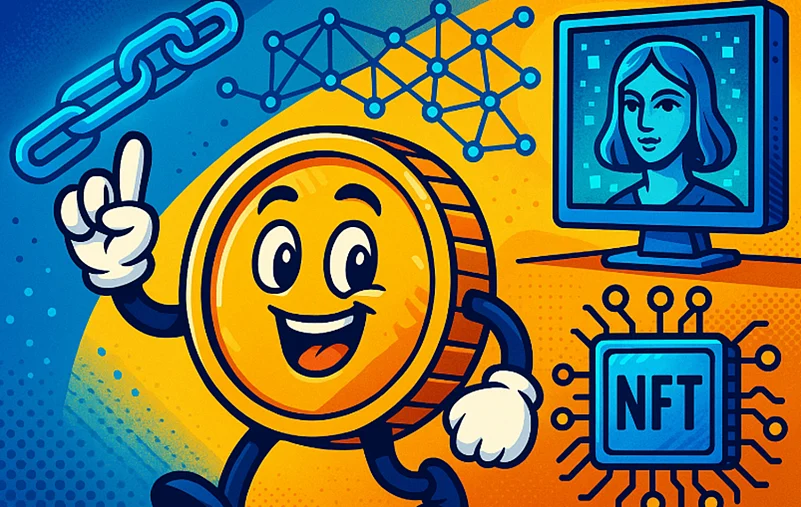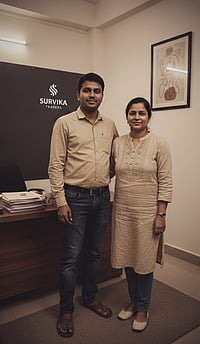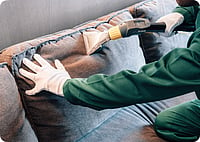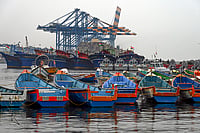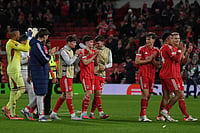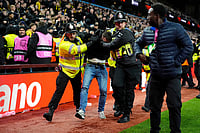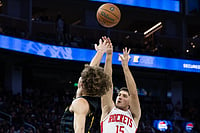The first wave of AI-generated art, powered by tools like Midjourney and DALL-E, was about democratizing creation. The next wave is about redefining art itself. We are moving beyond static images and into an era of living media—dynamic, interactive, and autonomous works that exist on the blockchain.
While the current generation of AI NFTs has already transformed the creative landscape, its true potential is only just beginning to unfold. The future is not just about humans using AI as a tool; it's about a fundamental shift in what art can be, how we own it, and who or what can be an artist.
The Next Frontier: From Static Images to Living Art
The future of AI-generated NFTs lies in their ability to evolve. The static JPEG, minted and unchanging, will soon be seen as a relic. The next generation of digital art will be dynamic and responsive.
Dynamic NFTs: Imagine owning a piece of art that changes with the real world. A digital landscape by an artist like Refik Anadol could shift its colors based on live weather data. A character portrait could subtly change its expression based on the price of Ethereum. These are not just images; they are living artworks with a perpetual connection to the world around them.
Interactive NFTs: The line between artist and owner will blur. Future NFTs will allow the owner to influence the artwork. You might be able to change the color palette of a piece, guide the narrative of a generative story, or contribute to the training of the AI model itself. Ownership evolves from a passive act to an ongoing creative partnership.
The Rise of the Autonomous Artist
The most profound shift will be in our definition of "artist." AI is evolving from a tool to a creator in its own right.
Decentralized Autonomous Artists (DAAs): Projects like Botto are the prototype for this future. Botto is an AI that autonomously creates art, which is then curated and voted upon by a human community of token holders. In this model, the AI is the artist, and the community acts as the muse and gallerist. This decentralizes taste-making and creates a new form of collaborative creativity between human and machine.
Generative AI "Styles": In the future, renowned artists may not sell individual pieces but rather their unique, trained AI models. Collectors could purchase access to an artist's model to generate a limited number of unique works in their signature style, creating a new economy of "generative royalties."
Redefining Originality and Provenance in the Age of AI
As AI becomes capable of perfectly mimicking any artist's style, the concept of a forgery will become obsolete. In its place, the importance of provenance will become absolute. The blockchain provides an immutable, public ledger that can prove:
Who created the work (whether a human artist or a specific AI model).
When it was created.
The specific prompts or data used in its creation.
In this future, the NFT is not just a certificate of ownership; it is the artwork's unforgeable birth certificate and historical record.
The Great Challenges Ahead
This evolution is not without its hurdles. The most significant questions are no longer technical but ethical and legal:
The Authorship Dilemma: If an AI creates a masterpiece, who is the artist? The person who wrote the prompt? The developers who coded the AI? Or the AI itself? Our legal frameworks for copyright are unprepared for this question.
The "Black Box" Problem: As AI models become more complex, their creative processes become opaque. How do we value or interpret art when not even its creator can fully explain how it was made?
Bias and Homogenization: AI models are trained on vast datasets of existing human art. There is a risk that this could lead to a future where art becomes aesthetically homogenous, endlessly repeating the patterns it has already learned.
Conclusion: A New Renaissance
AI-generated NFTs represent a pivotal moment in the history of art, a new renaissance where the very definition of creativity is expanding. We are at the beginning of a journey toward a future where art is intelligent, responsive, and co-created.
The artists, collectors, and technologists who embrace this new frontier will not just be participating in a market; they will be shaping the next chapter of human culture, one where the dialogue between human and machine becomes the most compelling art form of all.





